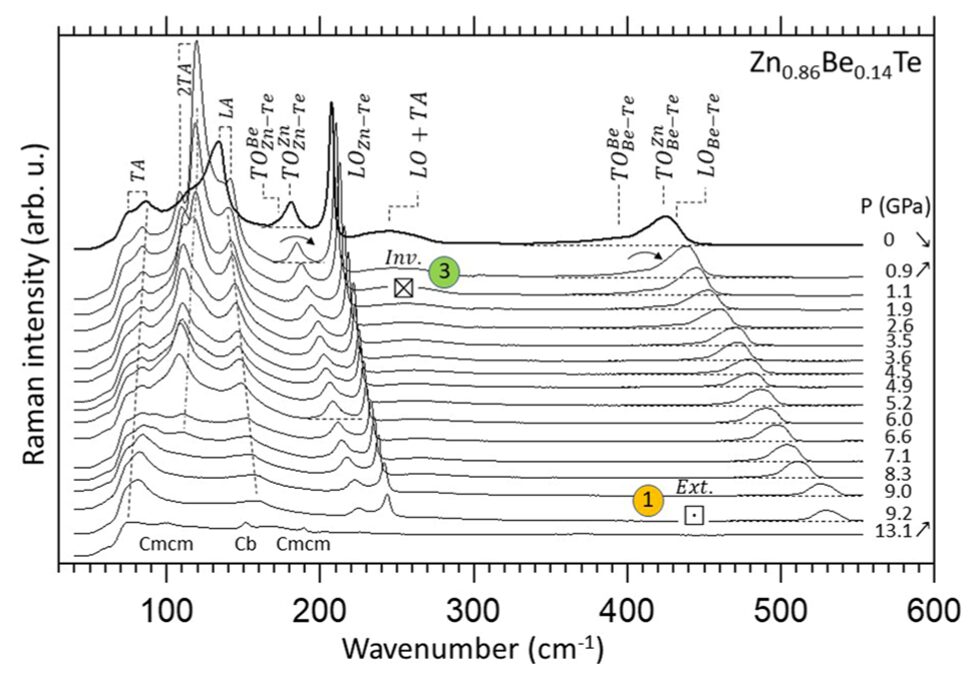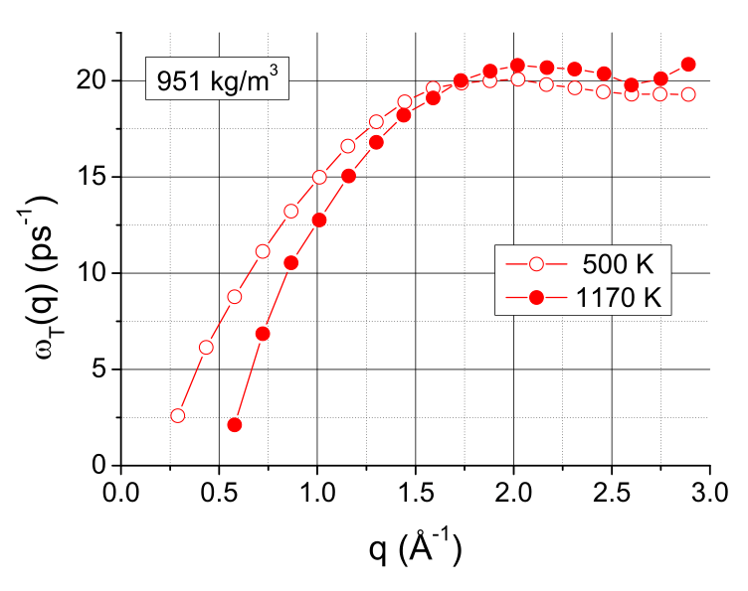Team manager : Andreï POSTNIKOV
Topic 1 : Disordered atomic systems

Raman spectra of (Zn,Be)Te
at different hydrostatic pressures
One line of research concerns a revised classification / taxonomy of vibration spectra (including those obtained under high-pressure conditions) of semiconductor alloys, within a framework of the (locally conceived) percolation model.
This research is carried out within the framework of the ViSA-IRP project (of an international laboratory “without walls”), launched for the period 2024-2028, with partners from France, Poland, India and Portugal, whereby LCP-A2MC is the main coordinator.
Lattice dynamics is studied throughout the Brillouin zone, from phonon-polaritons at the zone center to phonons at the zone boundary, using a combination of Raman spectroscopy, X-ray diffraction and neutron scattering.
Experiments carried out in the laboratory and at national-scale facilities (synchrotron, nuclear reactor) and discussed in comparison with the results of ab initio lattice structure / lattice dynamics calculations.
Another focus is on the dynamic properties (collective excitations, viscosity, diffusion) and structural properties (chemical, topological and orientational order) of metallic (pure and alloys) and molecular (water) liquid systems.
These researches essentially employ numerical simulation techniques, notably those of classical and ab initio molecular dynamics, which complement the existing experimental approaches, and sometimes represent the only technique available, particularly for fluids at high pressure and / or high temperature.

Dispersion curves calculated for transversal excitations in liquid sodium at two values of temperature
Topic 2 : Soft matter
Self-assembly of colloidal particles is a subject of fundamental interest in physics, which also has technological applications, e.g. in photonics and in sensor development.

Experimental image and schematic representation of a self-assembled binary colloidal cluster which rotates under an influence of in-plane rotating magnetic field.
We study the structure and dynamic properties of a suspension of paramagnetic colloids under a variable magnetic field, using an approach that combines experiments, theoretical modelling and numerical simulation. The use of a dynamic magnetic field gives rise to a wide variety of structures, some of which can serve as model systems for the study of active and biological matter. For example, a rotating field induces the formation of colloid clusters that resemble the cell aggregation studied in biophysics.
Biophysics is moreover accessed through the development of theoretical models of cellular and tissue biomechanics within the framework of various collaborations.
Regular members
- Lydiane BECU (Assistant professor)
- Jean-Marc BOMONT (Associate researcher HDR)
- Jean-Louis BRETONNET (Professor emeritus)
- Nazir FAZEL (Assistant professor)
- Pascal FRANCHETTI (Assistant engineer)
- Françoise GASSER (Assistant professor emeritus)
- Jean-Georges GASSER (Professor emeritus)
- Jérome GLEIZE (Assistant professor)
- Jean-Pierre GOBEAU (Assistant engineer)
- David GONZALEZ-RODRIGUEZ (Assistant professor HDR)
- Olivier GREFFIER (Assistant professor)
- Olivier PAGES (Professor)
- Andreï POSTNIKOV (Professor)
- Teddy TITE (Assistant professor)
- Jean-François WAX (Assistant professor HDR)
- Hong XU (Professor)
PhD students and Postdocs
- Margueritte CHEBIB DIT TELEGHRAPH (PhD Student)
- Abdelkerim Hassan HAMID (PhD Student)
- Mayssoune MINA (PhD Student)
- Marcelo SILVA BARREIRO (PhD Student)
